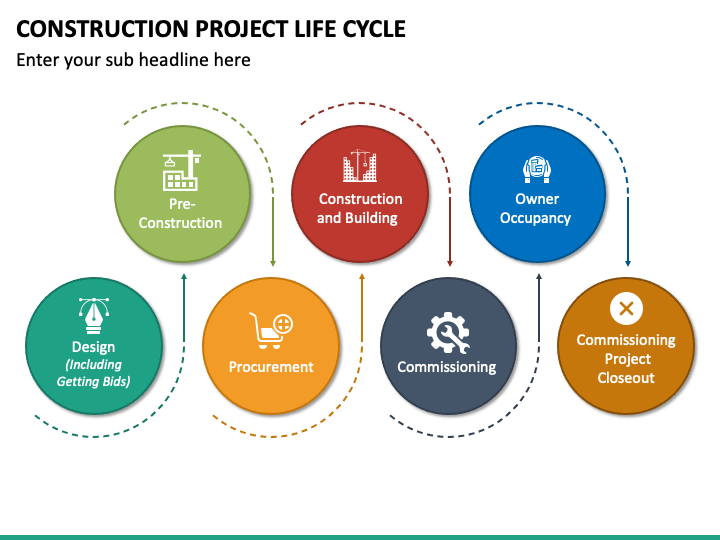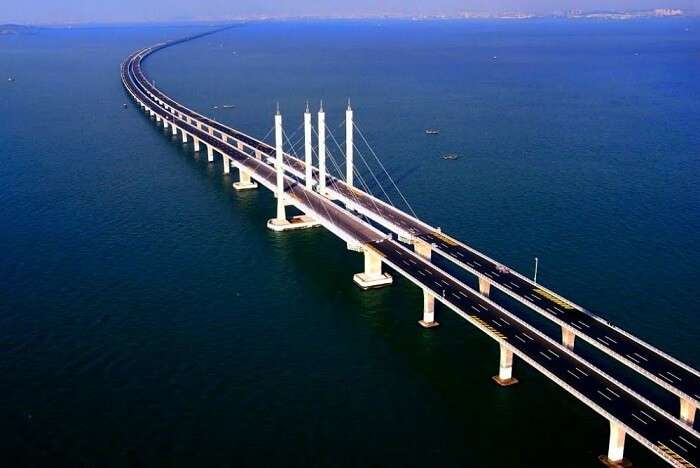Have you ever looked at a towering skyscraper or a sturdy bridge and wondered about the journey it undertook from just an idea to its grand existence?
Welcome to the fascinating world of civil engineering and construction, where dreams are crafted into concrete realities through meticulous planning, design, and execution. In this article, we embark on a journey through the Seven stages of a project lifecycle in construction, exploring each phase’s significance and the magic it brings to the built environment.

Stage 1: Conception
Every monumental project starts with a spark of inspiration, a visionary idea aimed at addressing a need or enhancing the environment. During the conception stage, stakeholders brainstorm, conduct feasibility studies, and assess the project’s viability. Factors such as budget, timeline, and resources are outlined, laying the groundwork for the journey ahead.
Stage 2: Planning
Once the concept gains traction, it’s time to dive into the nitty-gritty of planning. This stage involves defining project objectives, setting goals, and outlining strategies to achieve them. Detailed project schedules, resource allocation plans, and risk management strategies are developed to ensure smooth sailing throughout the construction journey.
Stage 3: Design
Arguably one of the most exciting stages, the design phase brings concepts to life through innovative blueprints and technical drawings. Architects, engineers, and designers collaborate to create structural designs, electrical layouts, and plumbing systems that meet safety standards and aesthetic requirements. This stage also involves obtaining necessary permits and approvals before moving forward.
Stage 4: Procurement
With designs in hand, it’s time to gather the necessary materials, equipment, and manpower to turn visions into reality. The procurement stage involves sourcing construction materials, negotiating contracts with suppliers, and hiring subcontractors to execute specific tasks. Bill of Quantities (BOQ) is prepared, detailing the quantities and specifications of materials required, ensuring transparency and cost-effectiveness in procurement processes.
Stage 5: Construction
The heartbeat of any project, the construction phase sees months or even years of meticulous planning and hard work come to fruition. Skilled laborers, under the supervision of project managers, work tirelessly to erect structures, lay foundations, and install infrastructure according to approved designs and specifications. Effective project management ensures tasks are completed on time, within budget, and in compliance with safety regulations.
Stage 6: Testing and Commissioning
Before unveiling the project to the world, thorough testing and commissioning are essential to ensure everything functions as intended. Electrical systems are tested for efficiency, plumbing is checked for leaks, and structural integrity is verified to guarantee the safety and reliability of the finished product. Any defects or deficiencies are addressed promptly to deliver a flawless end result.
Stage 7: Operation and Maintenance
Congratulations, the project is complete! But the journey doesn’t end here. The final stage of the project lifecycle involves transitioning from construction to operation and maintenance. Building owners or operators take charge of managing and maintaining the infrastructure, ensuring it remains functional and safe for years to come. Regular inspections, routine maintenance, and occasional renovations are carried out to preserve the project’s longevity and value.
Demolition – The End or a New Beginning?
While not always part of the traditional project lifecycle, demolition marks the end of one chapter and the potential beginning of another. Structures may be demolished due to safety concerns, obsolescence, or urban redevelopment initiatives. However, demolition doesn’t always signify the end; it paves the way for new possibilities, whether it be revitalizing urban spaces, constructing modern buildings, or embracing sustainable development practices.
Unveiling the Tapestry of Human Achievement
As we draw the curtains on our exploration of the seven stages of the project lifecycle in construction, we unveil a tapestry woven with threads of human ingenuity, collaboration, and relentless pursuit of excellence. From the humble beginnings of conception to the bittersweet farewell of demolition, each phase represents a chapter in the epic saga of building our world.
Civil engineering and construction stand as pillars of progress, transforming abstract ideas into tangible landmarks that shape the landscapes of our cities and the fabric of our society. The journey is not merely about bricks and mortar; it’s about the collective dreams, aspirations, and aspirations of generations past, present, and future.
In the intricate dance of planning, design, and execution, we witness the convergence of art and science, where creativity meets precision, and innovation flourishes in the face of challenges. It’s a testament to human resilience, adaptability, and the unyielding spirit that propels us to reach new heights and defy the limits of what is possible.
As we reflect on the marvels of our built environment, let us not forget the countless hands that toil behind the scenes, the architects who sketch visions of tomorrow, the engineers who calculate the forces of nature, the laborers who sweat and toil, and the project managers who orchestrate the symphony of progress.
Beyond the steel and concrete lie stories of perseverance, triumph, and the unwavering belief in the power of human creativity to shape a better world. So, the next time you walk past a towering skyscraper or traverse a sturdy bridge, pause for a moment and marvel at the journey it undertook, a journey fueled by passion, driven by purpose, and etched in the annals of history.
In the end, the project lifecycle is not just about construction; it’s about building a legacy that transcends generations, leaving an indelible mark on the tapestry of human achievement. And as we forge ahead into the future, let us continue to dream, create, and build, for the possibilities are as limitless as the boundless skies above.
Do You Know About Fascinating Facts in Construction Project Lifecycle?
Hey there, fellow enthusiasts of the built environment! So, you’ve been intrigued by the intricacies of construction project lifecycles, right?
Well, buckle up because we’re about to take a ride through some mind-blowing facts that will make you see these projects in a whole new light.
Let’s dive in!
1. Did You Know? Ever wondered how the Great Pyramid of Giza, one of the Seven Wonders of the Ancient World, was constructed?

Well, here’s a jaw-dropping fact: it took an estimated 20 years to complete this architectural marvel, with a workforce of around 20,000 to 30,000 laborers!
2. Ever Heard of the Panama Canal?

This engineering marvel, connecting the Atlantic and Pacific Oceans, is more than just a waterway; it’s a testament to human perseverance and innovation. But did you know that the construction of the Panama Canal faced numerous challenges, including tropical diseases like malaria and yellow fever? Despite these hurdles, it was successfully completed in 1914, revolutionizing global trade forever.
3. The Burj Khalifa – A Towering Achievement

Standing tall amidst the skyline of Dubai, the Burj Khalifa holds the title of the tallest building in the world. But here’s a fun fact: did you know that it took over 110,000 tons of concrete, 55,000 tons of steel rebar, and 22 million man-hours to construct this architectural masterpiece? That’s enough steel to build 10 Eiffel Towers!
4. The Intriguing Case of the Sydney Opera House
Ah, the iconic Sydney Opera House, with its distinctive sail-like roofline, is a symbol of architectural brilliance. But here’s a little-known fact: the construction of this landmark took a whopping 16 years to complete! Originally budgeted at $7 million, the final cost skyrocketed to over $102 million.
5. The Power of 3D Printing in Construction
Now, here’s something straight out of a sci-fi movie: 3D printing in construction! Yes, you heard that right. With advancements in technology, architects and engineers are harnessing the power of 3D printing to create intricate building components with precision and efficiency. From houses to bridges, the possibilities are endless!
6. The World’s Longest Bridge – Danyang-Kunshan Grand Bridge

Spanning over 164 kilometers (102 miles), the Danyang-Kunshan Grand Bridge in China holds the title of the world’s longest bridge. Imagine driving across that! This engineering marvel, which forms part of the Beijing-Shanghai High-Speed Railway, showcases the incredible feats of modern bridge construction.
So, there you have it, folks, and a glimpse into the fascinating world of construction project lifecycles, filled with awe-inspiring achievements and remarkable innovations. From ancient wonders to modern marvels, each project tells a unique story of human ingenuity and determination. So, the next time you marvel at a towering skyscraper or cross a majestic bridge, remember the incredible journey it undertook, a journey shaped by the hands and minds of visionaries past, present, and future.



